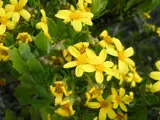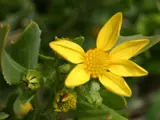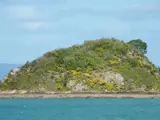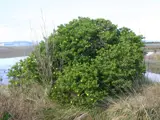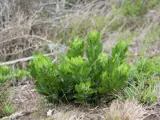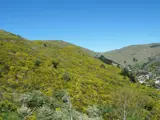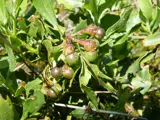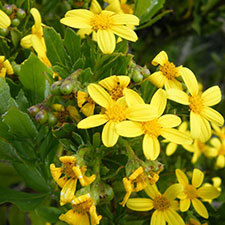 Boneseed
Boneseed
Common name: Boneseed
Botanical name: Chrysanthemoides monilifera ssp. monilifera
Management programme: Progressive Containment
Boneseed is named due to the white, bone-like appearance of its seeds. It originates from South Africa and was introduced as a garden plant because of its attractive yellow flowers.
Why is it a pest?
- Boneseed is a problem as it colonises coastal areas and outcompetes native vegetation. It rapidly forms dense cover which shades out native seedlings.
- Up to 50,000 seeds can be produced per plant in one year.
- Seeds can remain fertile in the soil for up to 10 years.
- It is highly flammable and will regrow to be stronger after a fire.
Where is it found?
Boneseed is present in scattered patches along the western and eastern Bay of Plenty coastline. In particular, larger infestations are known to be around Maketū and Ōhope.
Its seed is dispersed by birds, water and soil movement. It is found in coastal areas, cliffs, forest margins and wasteland and particularly likes dry sites with poor fertility.
What does it look like?
- Densely branched, evergreen shrub up to 3m tall.
- Dull green, smooth, leathery leaves with toothed edges.
- Bright yellow daisy-like flowers from September to February.
- Hard, oval green fruit which ripen to black.
What are the rules?
Progressive Containment
Progressive Containment species are pests which the Council aims to prevent from spreading, reduce the distribution, or eradicate within parts of the region over time. Landowners or occupiers are responsible for the control of Progressive Containment species on their property. Council may enforce the control of these pest species.
How do you get rid of it?
Control of boneseed can be undergone year round. Controlled plants should be left on site to rot down and reduce risk of spreading seed further.
- Hand-pull all but the large plants
- Large plants cut the stump near the ground using a suitable herbicide gel
- Foliage spray is an option
Regular follow-up treatment will be necessary for some years until seed bank is exhausted.
Control is often difficult where plants occur on cliffs. Contact Bay of Plenty Regional Council for expert advice on your particular location.
CAUTION: When using any herbicide or pesticide, PLEASE READ THE LABEL THOROUGHLY to ensure that all instructions and directions for the purchase, use and storage of the product, are followed and adhered to.
Read more on pest control advice, information and regulations.
Images

